American entrepreneur William Wrigley Jr. entered world history as a successful businessman and individual who significantly contributed to popularizing chewing gum. He did not invent chewing gum and was not even the first to receive a patent for it in the United States, which happened in 1869. But in the history of the chewing gum industry, William Wrigley Jr. is truly an exceptional figure. Learn more about him at philadelphia-future.

If the school did not teach, then work will!
William Wrigley Jr. was born on September 30, 1861, in Philadelphia and was the eldest son in a family of five children. Biographers note that the boy, named after his father, caused both him and his mother a lot of trouble. He was expelled from school multiple times, and at the age of 11, he even ran away from home. One day, William Sr. decided that his son’s behavior at school was enough for him: if school didn’t teach him, then work would! The father sent his son to work at his own Wrigley’s Soar factory in Philadelphia, which was engaged in soap production. The new worker’s task was to mix soap solution in vats, which would later be turned into products. The boy earned one and a half dollars a week, working 10 hours a day. Surprisingly, he did not miss school at all. In a year, the diligent worker was even promoted. From then on, William had to sell soap, traveling in a van to neighboring cities around Philadelphia. This became an appropriate occupation for the boy. The young merchant learned how to make ordinary people his customers. Each time, the young man improved his persuasive skills, enjoyed successful acquaintances and learned the psychology of buyers.
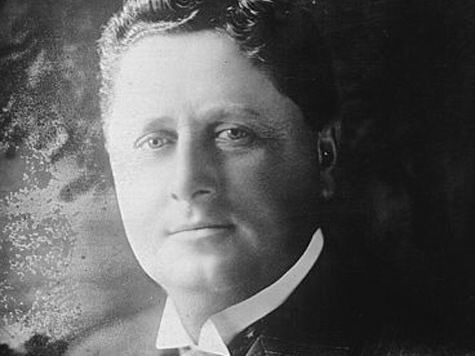
In 1885, William married Ada Elizabeth Foote. The couple moved to Chicago, where the young man was to open a branch of the family business. However, the soap did not sell well, so the son suggested to his father to add something for free to the product to attract customers. Once, William bought 65 thousand cheap and low-quality umbrellas for this purpose whose paint washed away at the first rain. Nevertheless, buyers fell for the free addition to the soap. The merchant concluded that people like it when they are given something for free.
Soon, cookbooks and baking powder became free companions to the soap. As it turned out later, people were buying soap because they primarily liked the powder, not the soap itself. Family soap completely lost its authority in William’s eyes. He thought something like this: “Okay, we can sell this good baking powder, but also we can add free chewing gum, for example. Exactly! Customers chewed gum very often!”
People bought the product because of the free chewing gum
Americans inherited the habit of chewing gum from the Indians, who used spruce bark instead of it. In the 1890s, gums were also made of paraffin, with licorice added for flavor. However, it dissolved quickly in the mouth, and the person chewed something rough and tasteless. Wrigley was not a pioneer in this business, as at that time, there were more than a dozen small gum manufacturers operating. So, he analyzed the market and chose a new material for gum. It was chicle, a natural rubber extract from a tropical tree that Mexicans used in rubber production. The unexpected thing happened: the free chewing candies that William gave out when people bought his baking powder attracted the public more than the powder itself.
“No more additions to the main product!” – decided the merchant and focused solely on the production and sale of chewing gum!
Wrigley bought out the company that produced his chewing gum, and two companies formed the Wm. Wrigley Jr. Company. The first gums, created separately for women and for the general public, appealed to buyers but did not bring the desired success. In 1893, Wrigley introduced “Juicy Fruit” and “Wrigley’s Spearmint” gums. William encouraged his dealers with such gifts as coffee grinders, scales and anything he could so that the retailers would thank him with sales. But sales did not grow, even after two advertising campaigns costing $100,000. He was on the verge of disaster. However, in 1899, the entrepreneur still refused an offer to join a trust as part of six competitors and instead chose to fight!
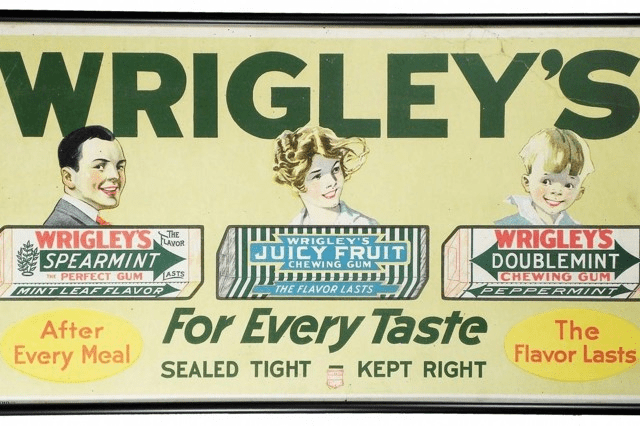
In 1907, after the well-known Banking Panic, which was a period of general financial crisis in the United States, William Wrigley took another risk. He decided to invest in advertising. He took out a loan of $250,000 to purchase newspaper space that would have been worth $1.5 million in prosperous times. His competitors did not dare to do this. Yet, he persistently tried to attract customers, encouraged retailers and asked them to be very polite with clients. Although he always said that usually a buyer says “No!” to a seller, a true salesman won’t give up until the last “No!” is spent!
The company of the risky leader became a top performer
The entrepreneur’s efforts began to show results in 1910. Profits increased from $170,000 to $3 million per year. The whole country chewed Wrigley’s gum. He even had the chance to open the first overseas factory in Canada (and in 1927, in the UK). In 1914, a product with a mint flavor called “Doublemint” was introduced to the world in a bright green wrapper. It came with powerful advertising of double freshness on billboards and in commercials (the product was promoted by twins and acting duos). In 1915, the businessman sent free packs of gum to Americans who had telephones (according to his assumptions, they were wealthy). This move also had the desired effect.
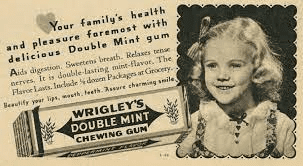
As early as 1916, William Wrigley’s employees had unprecedented benefits and rights for that time, and from 1924, they even had two days off per week. This was unique at that time. As for other innovations, the tabs in the chewing gum were also Wrigley’s idea, as were the separate wrappers for each gum piece.
This is how the company of the risky leader rose to the top. In 1919, it entered the New York Stock Exchange. Construction of the Wrigley Building, which later became a symbol of Chicago, began in 1924. The company’s advertising budgets kept growing because Wrigley put a lot of importance on marketing in various forms. In 1931, an astounding $6 million was spent on it! According to Wrigley’s plan, the advertising was aired quickly and frequently.
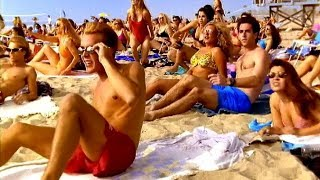
Photo: A snippet of one of the most famous commercials for chewing gum by Wrigley
William Wrigley loved aphorisms and was even remembered for his own. He believed that anyone could make chewing gum, but not everyone could sell it successfully. It was really challenging, but he stubbornly handled it. His industrial empire conquered 60% of the global chewing gum market in 1932. Thanks to his chewing gums, he added another important aspect to the American way of life, a symbol of national daily life. That same year, the former low-performing student passed away as a multimillionaire. He owned dozens of enterprises in different countries worldwide, a popular baseball team, an island near Los Angeles, which William transformed into a paradise and plenty of other luxuries. Wrigley was lucky with his heirs. His son Philip and grandson William faithfully served the family business and the surname that was on billions of chewing gum wrappers.
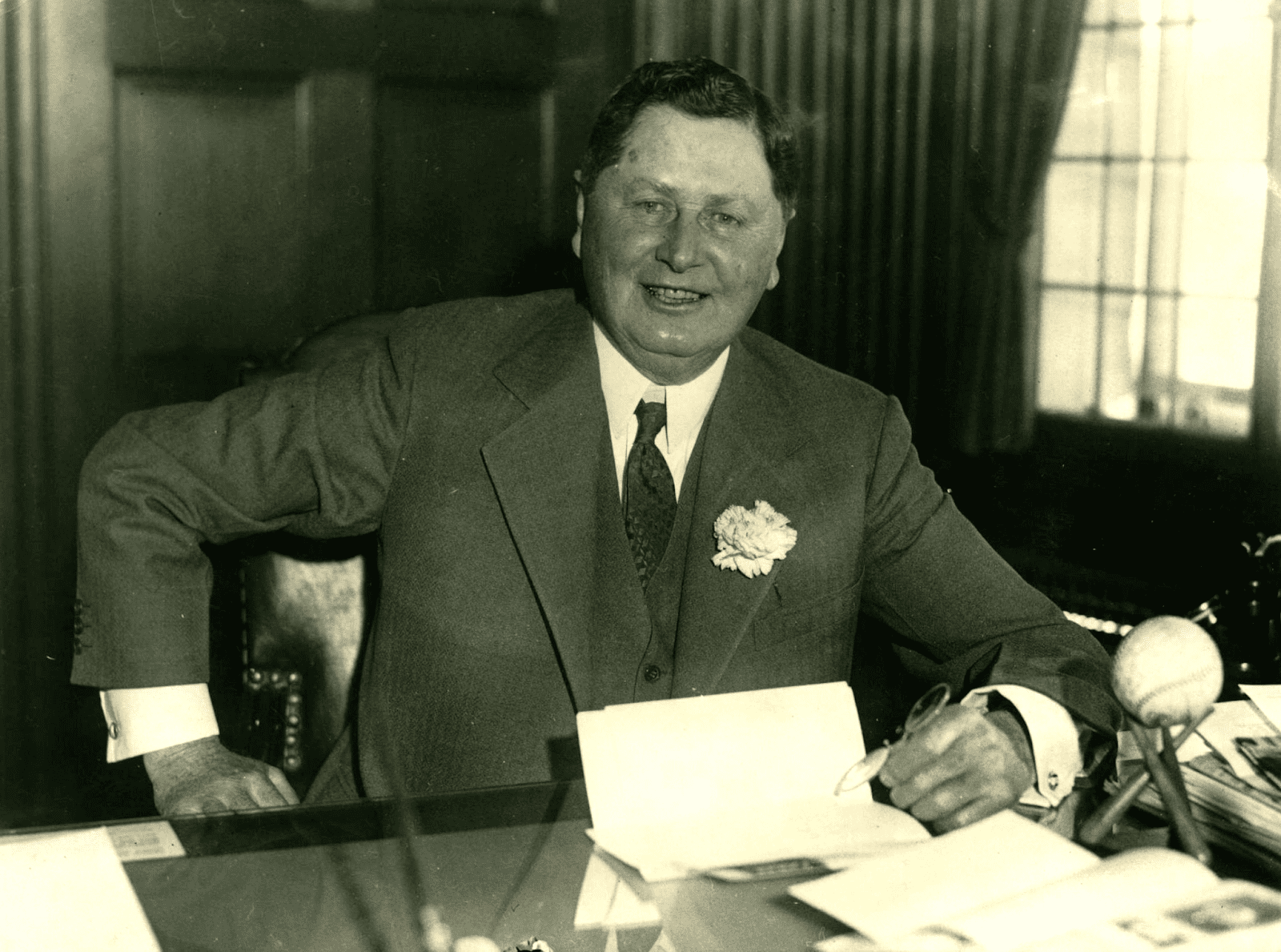
The legend was taken over by a giant
During the years of World War II, “Juicy Fruit,” “Wrigley’s Spearmint” and “Doublemint” were replaced by “Orbit” (its first batch was released back in 1899). During the war, there was a shortage of ingredients for popular chewing gums. The company decided to supply all the scarce quality products to soldiers to boost morale. “Orbit” for civilians was of subpar quality. In 1946, the old brands came back on shelves, and the production of “Orbit” was halted for a long time.
Year after year, the Wrigley Company expanded, conquered the world and released new brands. Throughout its history, it was managed by four generations of the Wrigley family. At a certain point, the demand for chewing gum began to decline. In 2006, the descendant of the founder, William Wrigley Jr., resigned his post as the head of the company, breaking the family tradition. In 2008, when the annual sale of Wrigley reached $5.4 billion in over 180 countries, the company was acquired by the food giant Mars for $23 billion (the takeover process was completed in 2016). Since 2009, the company has included globally renowned brands such as Hubba Bubba, Freedent, Big Red, Extra, Winterfresh, Surpass, Eclipse and others.
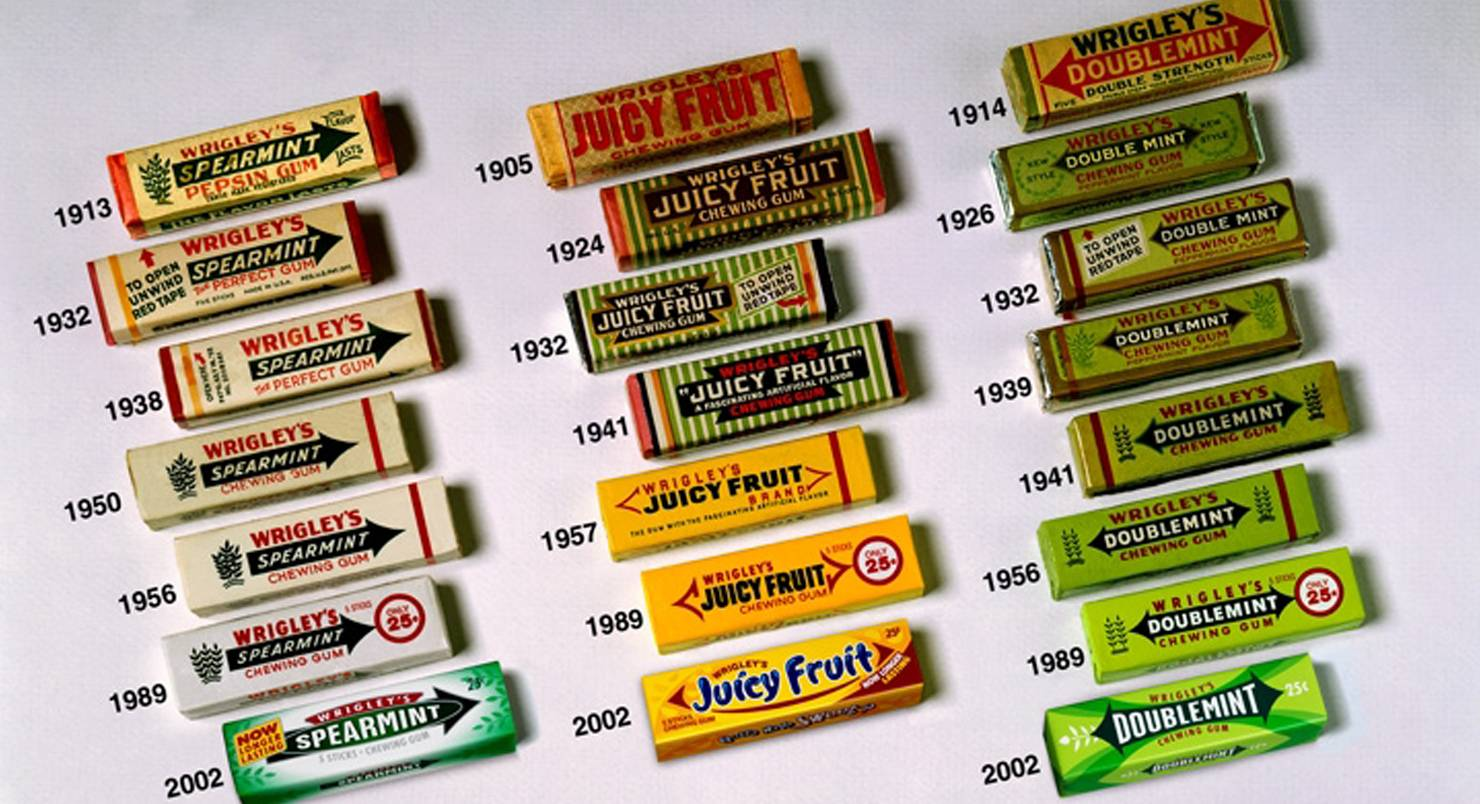
At the beginning of the 20th century, chewing gum was advertised as a means of whitening teeth, refreshing breath and relieving stress. Every year, people around the world chew up to 100,000 tons of gum! The products introduced by William Wrigley have remained leaders in the global market for 130 years. However, experts say that from 2009 to 2020, gum sales in the US dropped from $4.12 billion to $3.15 billion per year. The COVID-19 pandemic significantly weakened the gum market, as gum is often chewed before meetings to freshen breath. People stopped meeting as often, and this need disappeared. Yet, true lovers of quality gum will never betray them. Don’t you agree?